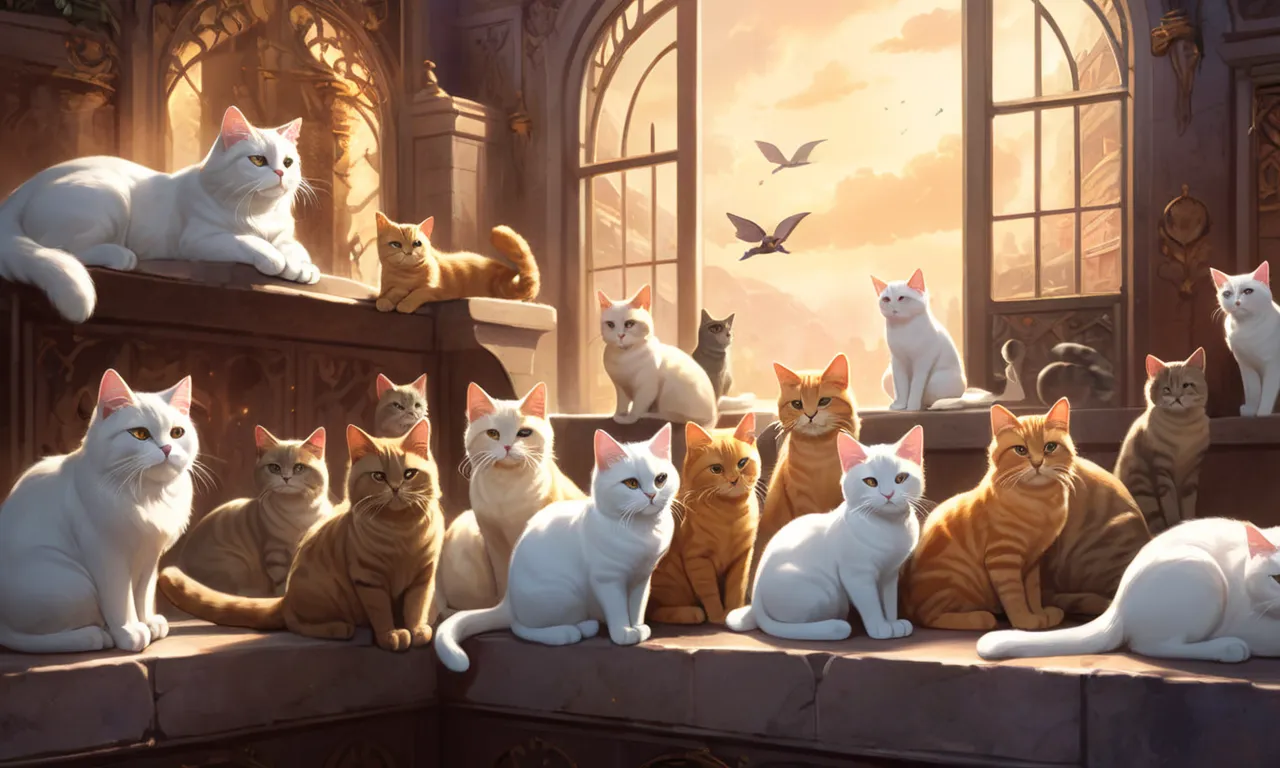Many Cats Dream Meaning: A Comprehensive Guide

Many cats dream as they sleep, but what do these dreams mean? Dreams are a fascinating aspect of human psychology and can provide insights into our subconscious mind. Similarly, cat dreams may offer clues about their emotional states or even reveal issues that need attention. In this article, we will explore the many aspects of cat dreams and what they might indicate.
Understanding Feline Sleep Patterns
Before diving into cat dream meanings, it’s essential to understand the sleep patterns of cats. Unlike humans who have a consistent sleep cycle throughout the night, cats are polyphasic sleepers, meaning they sleep in short bursts interspersed with periods of wakefulness. This type of sleep pattern is more common among mammals and birds than humans.
During these short naps, also known as “catnapping,” your feline friend might exhibit rapid eye movement (REM) sleep. REM sleep is associated with vivid dreaming in both cats and humans. A study published in the journal Current Biology found that cats enter REM sleep faster than humans do, often within 10 minutes of falling asleep.
Common Cat Dream Behaviors
While observing your cat during sleep, you may notice certain behaviors that indicate dreaming:
- Rapid Eye Movement (REM): Cats’ eyes might dart rapidly under their closed lids, similar to the human eye movement during REM sleep.
- Twitching or Flicking: A twitching tail or whiskers suggest that your cat is reacting to something in its dream.
- Paw Twitching: Your cat’s paws may move as if they are walking, running, or even hunting – a common behavior during feline dreams.
- Purring: Although purring is often associated with contentment, some cats purr while dreaming too.
The Significance of Cat Dreams
Now that we understand the basics of cat sleep patterns and behaviors during REM sleep, let’s explore what these dreams might mean.
- Hunting Instinct: As predators by nature, it’s not surprising that many cats dream about hunting. These dreams can be a way for your feline friend to satisfy its natural instincts while sleeping.
- Playtime Memories: Cats love playing and exploring their surroundings. Dreaming about these activities could help maintain their mental stimulation when they’re resting.
- Social Interactions: Just like humans, cats form social bonds with other animals or people. If your cat spends time around other pets or family members, its dreams might reflect interactions it had during the day.
- Stress Reduction: Like humans, cats can experience stress from various sources such as change in environment, loud noises, or even boredom. Dreaming may serve as a coping mechanism for handling stress in a safe environment.
- Exercise and Physical Activity: Cats need regular exercise to stay healthy and maintain proper muscle function. During sleep, your cat’s brain might process the physical activities it undergoes during the day, helping them maintain peak performance.
- Emotional Expression: Similar to humans, cats use dreams to express emotions they experience while awake. Aggressive or fearful behaviors during dreaming could indicate unresolved issues that need attention from their owners.
- Mental Health and Brain Development: Research shows that REM sleep plays a crucial role in memory consolidation, learning, and emotional regulation. It’s likely that cats experience similar benefits during their dream cycles.
In conclusion, understanding the many aspects of cat dreams can provide insights into your feline friend’s mental and emotional state. By paying attention to their sleep patterns and behaviors, you may be able to detect signs of stress or other issues that require intervention. Remember to treat your cat with kindness and patience when dealing with any potential concerns related to their dreams.





